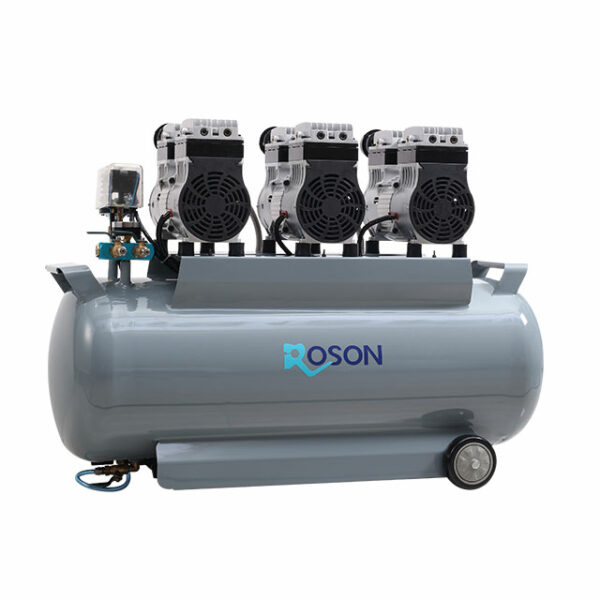Unlocking the Secrets of Dental Air Compressors: How They Power Your Smile!
Dental air compressors are an essential component in modern dental practices, providing the necessary air pressure for a range of procedures. Their importance cannot be overstated, as they power the tools that dentists use every day, from handpieces to suction systems. For both dental professionals and patients, understanding how these compressors function is vital. Not only do they contribute to the efficiency of dental procedures, but they also play a crucial role in ensuring patient comfort during treatments. When I accompanied a friend to the dentist, I was amazed to learn how much the dental air compressor influenced the overall experience, from the sound of the tools to the precision of the work. This article delves into the intricacies of dental air compressors, exploring their workings, applications, and maintenance to give you a comprehensive view of their significance in the dental world.

What is a Dental Air Compressor?
A dental air compressor is a specialized piece of equipment that generates compressed air for use in various dental applications. Unlike general air compressors used in industries such as construction or manufacturing, dental air compressors are designed specifically for the medical environment. They produce clean, dry, and oil-free air, which is crucial for the safety and comfort of patients. The primary function of a dental air compressor is to provide consistent and reliable air pressure to dental instruments, ensuring they operate effectively. Comprised of several key components, including a motor, pump, and storage tank, these compressors are tailored to meet the unique demands of dental procedures, distinguishing them from their industrial counterparts.
How Do Dental Air Compressors Work?
The operation of a dental air compressor involves several steps, beginning with air intake. Ambient air is drawn into the compressor through an intake filter, which removes dust and contaminants. Once the air is inside, it passes through a motor-driven pump that compresses it to the required pressure. This process is essential, as different dental tools require varying levels of air pressure to function optimally. After compression, the air is stored in a tank until it is needed for dental procedures. It's important to maintain proper air quality and pressure; hence, dental air compressors are equipped with filters and drying systems to remove moisture and contaminants, ensuring the air delivered to dental instruments is clean and safe. A friend of mine, who works as a dental hygienist, often emphasizes the importance of regular checks on the air compressor to prevent any issues that could impact patient care.
Key Components of Dental Air Compressors
Understanding the key components of dental air compressors is essential for grasping their function. The motor is responsible for driving the pump, which compresses the air. The storage tank holds the compressed air until it’s needed, ensuring a steady supply. Filters play a critical role in removing impurities and moisture from the air, while pressure regulators help maintain the correct air pressure for dental instruments. Each component works in harmony to ensure the compressor operates efficiently and provides high-quality air, which is vital for the success of dental procedures.
Applications in the Dental Industry
Dental air compressors serve a variety of applications within dental practices. They are primarily used to power handpieces, which are essential tools for drilling, cutting, and polishing teeth. Additionally, many air-driven instruments, such as scalers and air abrasion units, rely on compressed air to function. Dental suction systems, which remove saliva and debris during procedures, also depend on the reliable operation of dental air compressors. These applications not only enhance procedural efficiency but also contribute to patient comfort. For instance, during a recent dental cleaning, I noticed how the gentle hum of the air-powered tools made the experience more pleasant, showcasing the vital role these compressors play in everyday dental care.
Maintenance and Best Practices
To ensure optimal performance and longevity of dental air compressors, regular maintenance is crucial. This includes routine checks of filters, pressure regulators, and moisture traps to prevent any blockages or contamination. It’s also essential to drain the storage tank regularly to remove any accumulated moisture, which can lead to corrosion and affect air quality. Common issues faced by dental practices include fluctuating air pressure or unusual noises during operation, which can often be traced back to neglecting maintenance. By following best practices and addressing any problems promptly, dental professionals can keep their air compressors running smoothly, ultimately benefiting their patients.
Significance of Dental Air Compressors in Dentistry
In summary, dental air compressors are a cornerstone of modern dentistry, powering a variety of essential instruments and systems. Their role in ensuring the comfort and safety of patients during procedures cannot be overlooked. Understanding how these compressors work, their applications, and the importance of proper maintenance is essential for dental professionals and patients alike. Next time you visit the dentist, take a moment to appreciate the technology behind your dental care, as it plays a significant role in achieving that bright, healthy smile!








